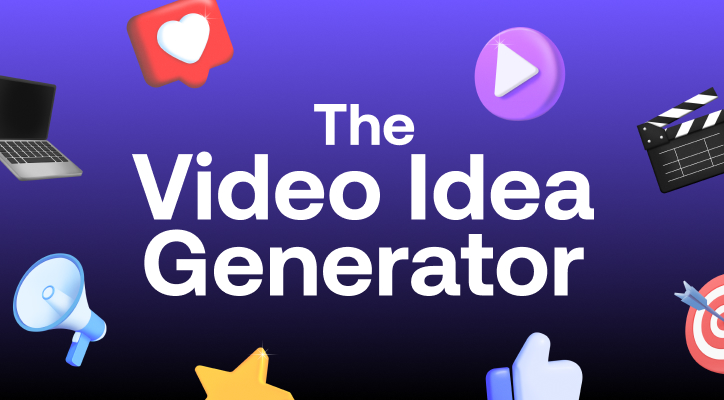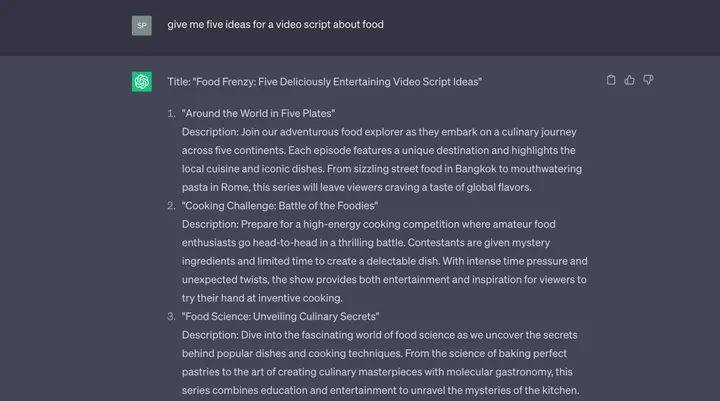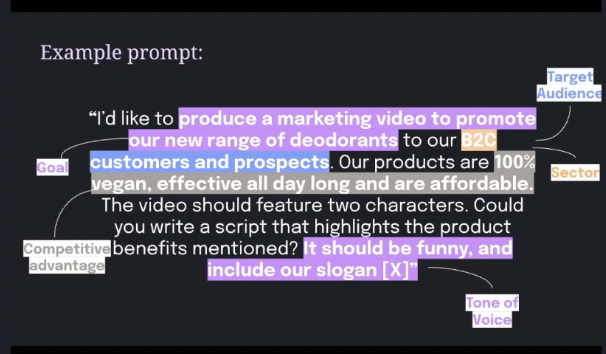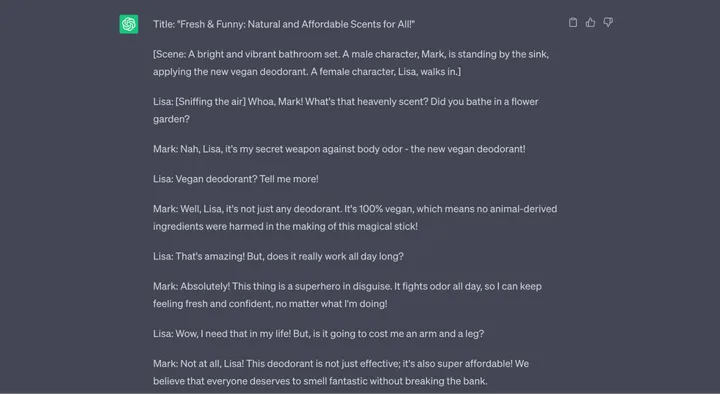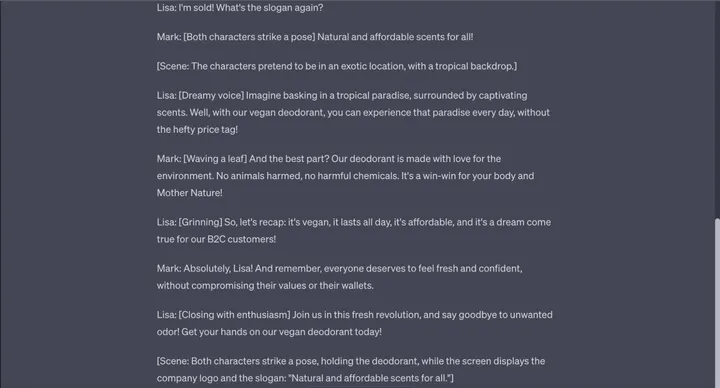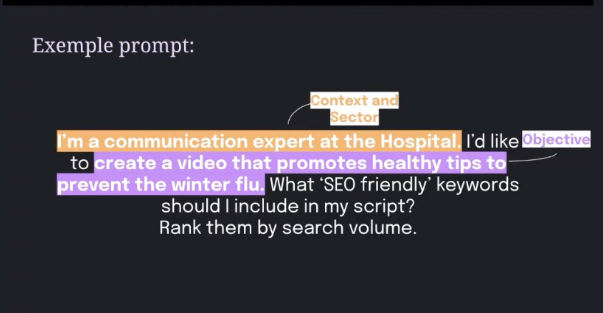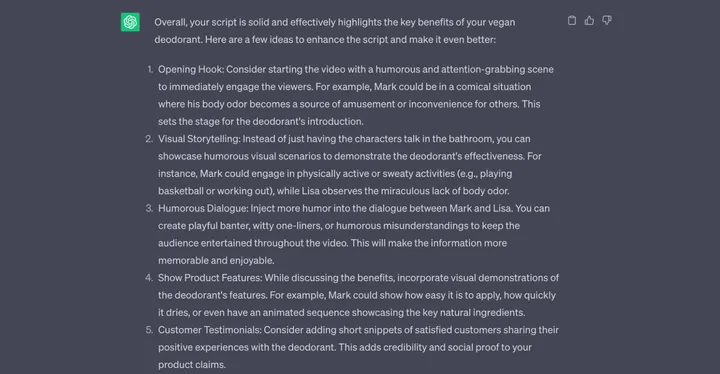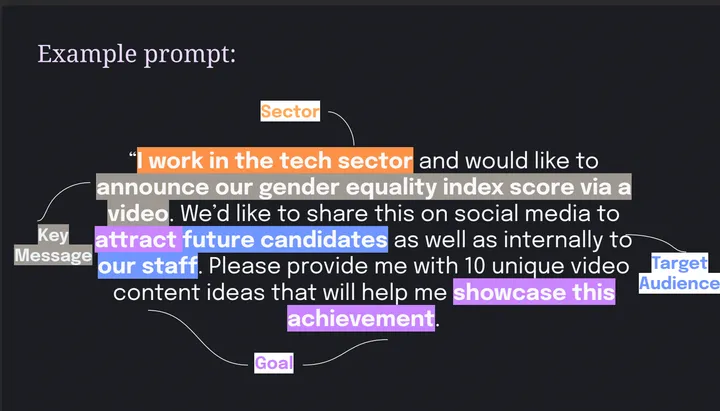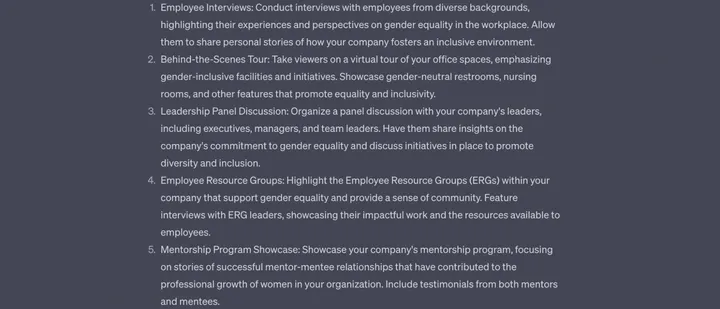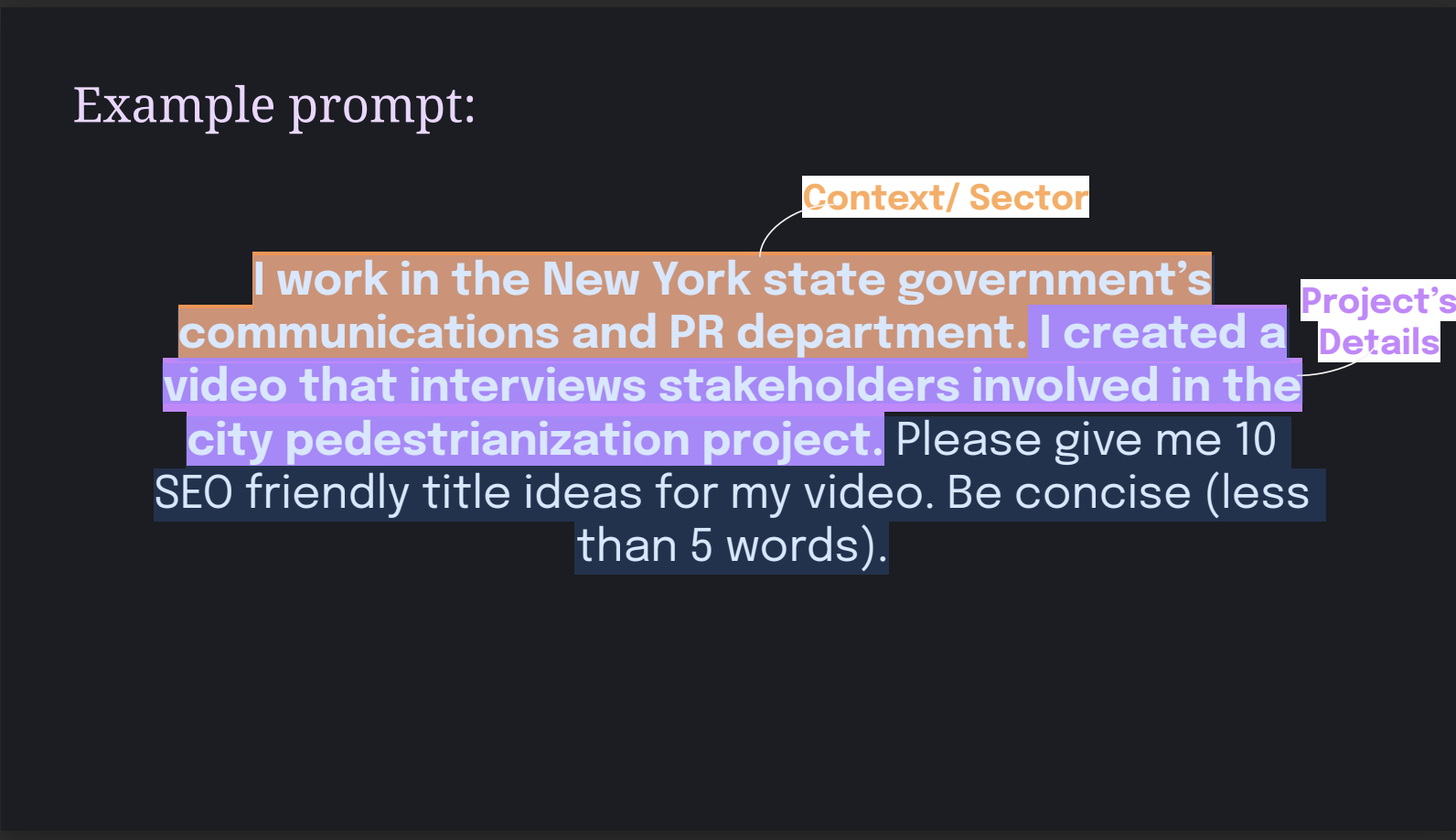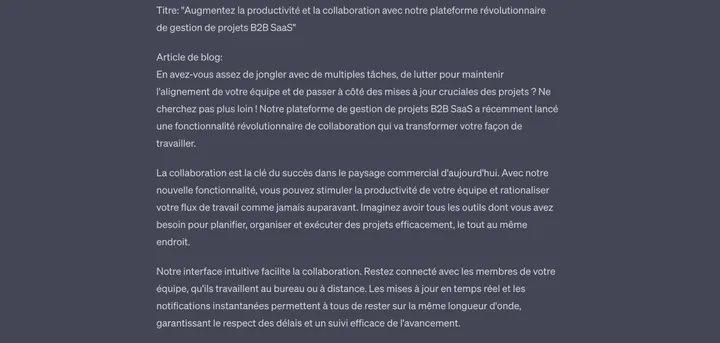Behind every successful video campaign is a script with a compelling narrative that aligns your business goals with your audience’s expectations. But writing an engaging script can be challenging — between creative ruts and budget constraints, most video marketers struggle with developing video scripts that win their audience over with compelling storytelling.
Thankfully, AI tools like ChatGPT can make the process much easier. In this article, we'll show you how to use ChatGPT as a trusted assistant for video scripting.
What is ChatGPT?
ChatGPT is an AI chatbot launched by OpenAI in 2022. It runs on GPT 3.5 — an advanced learning language model that enables it to generate human-like responses to prompts and questions.
ChatGPT is trained on large datasets of text and code, which allows it to answer questions creatively, translate languages and write different kinds of content. For example, we asked ChatGPT to come up with three ideas for a video script, and here's what we got:
Despite its remarkable capabilities, ChatGPT is far from perfect. It's an AI language model without personal experiences or human nuances — making it prone to errors. Also, its dataset is limited to 2021, meaning it cannot answer questions or generate responses to prompts on current issues.
Now that you understand how ChatGPT works, let's dig into the qualities of a good video script — so you know what to prioritize when creating yours and help ChatGPT provide you with high-quality answers based on robust prompts.
What makes a good video script?
A good video script is clear, visually appealing, and original. Let's discuss these characteristics in detail.
Clear
Clarity means that the video script is easy to understand. Anyone who reads the script should be able to understand its intended message without ambiguity or confusion — even if they are not a part of the scripting team.
To write a clear video script, you must:
1. Focus on a single message
You can't convince your audience if you're trying to tackle too many issues in your video script.
Instead, focus on a single message. Ask yourself, “What's the most important thing I want the audience to understand after watching this video?”, then, write a script that conveys this message simply and concisely.
2. Limit jargon
Use simple words to convey your message. For example, say “tiny” instead of “minuscule” and “sociable” instead of “gregarious.”
The point isn't to dumb down your audience’s intelligence. Instead, it is about using familiar words that match their level of expertise.
3. Eliminate fluff
Remove unnecessary words that do not add to your message. Focus on passing your message across in as few words as possible.
For example, consider these two sentences:
1. In the realm of digital advertising, wherein the utilization of visual and auditory stimuli through the medium of videos is harnessed as a powerful tool for promotional purposes, video marketing emerges as a strategic approach that effectively engages and captivates target audiences, ultimately facilitating brand recognition and fostering enhanced customer conversion rates.
2. With video marketing, you can engage target audiences, enhance brand recognition, and increase conversions.
Which one is easier to understand? Definitely the second! It goes straight to the point and explains what the audience stands to gain from video marketing.
2. Original
A good video script presents a fresh take on ideas and concepts. Instead of copying and pasting existing concepts, it draws inspiration from them and adds a unique twist to create something new.
The most effective way to develop an original video script is to infuse your brand elements into it. You can match the script with your brand’s tone and voice or center the video’s theme on your brand values.
A good example is our quarterly recap video, as seen below — where we always incorporate PlayPlay’s logo and brand colors into the overall video theme. And the concept matches the exciting, light-hearted nature of our brand.
3. Visually-appealing
A good video script uses visual cues and descriptive language to enact exciting action and capture the audience's attention. And the best way to achieve this is with the “show not tell” technique.
“Show not tell” means using actions or descriptive words to paint mental images in your audience’s mind rather than relying on direct exposition or explanation. For example, instead of saying, “Generate video scripts in one click,” you show someone performing the action with your software.
Here are some other ways to incorporate this technique into your script:
- Use flashbacks and memories to show the character's past experiences.
- Show time passage: Instead of telling the audience how much time has passed, show it through changes in characters, settings, or events.
- Personify non-human characters: Say your brand logo is an elephant; you might personify the animal and have it carry out different actions in your script.

Want to know more about what makes a good script?
If you think all of these things sound overwhelming, that's because they are! Writing a video script that checks the boxes mentioned above can be expensive, time-consuming, and mentally exhausting — and it's even more challenging when you have to create multiple scripts in a day.
This is where AI tools like ChatGPT come in.
How to create AI-generated video scripts with ChatGPT
ChatGPT cannot generate a high-quality video script on its own — what you get will need some work to make it appealing.
However, with expert human guidance, it will create a solid first draft of a video script that helps you reach your business goals quickly. The trick? Be as precise in your prompts as possible. Let’s break that down into 3 steps!
Step 1: Write a good brief
A good brief explains what you want to achieve with your video script and how you'll go about it. Anyone who reads it should find answers to these five questions:
1. What is the goal of your video script?
2. Who is your target audience?
3. What is the key message of your video script?
4. How will the script feel, look and sound and what tone of voice/ emotions do you want to convey?
5. What is the video length and format?
Say you're writing a video commercial script for a fashion house; your brief might look like this:
Title: Discover Elegance: Introducing [Clothing Store Name].
Video length: 30 seconds.
Format: Animation.
Goal: Brand awareness for our new clothing store.
Target audience: Middle-aged women looking for corporate and chic clothing.
Key message: We have the most beautiful and affordable clothing for corporate and stylish women.
Tone: Relaxed and exciting.
Visuals: Vibrant colors showcasing elegant clothing options and diverse models representing middle-aged women in professional settings.
Background music: Upbeat and contemporary, reflecting the modern and trendy atmosphere.
This brief sets the creative direction of your video script. It provides a clear vision and guidelines for how the script should look like — making it easier for you to guide the AI bot. You'll compare ChatGPT’s output to your creative direction to see how well they align with your original idea and tweak it accordingly.

PlayPlay Pro tip:
Step 2: Write your prompt
ChatGPT’s output is only as good as your prompt. So, if you want a solid AI script draft on the first try, you need to get prompting right. Writing the prompt will be easy if you do an excellent job with your video script brief.
A good prompt checks five crucial boxes:
- Who you're speaking to — your target audience
- What you want ChatGPT to create — your goal
- Your business context or sector
- Your competitive advantage — what makes your product or service stand out
- What you want the video to sound and feel like
Say you want ChatGPT to generate a marketing video script for promoting your new range of deodorant; your prompt might look like this:
“I'd like to produce a marketing video to promote our new range of deodorant to our B2C customers and prospects. Our products are 100% vegan, effective all day long, and affordable.
The video should feature two characters. Could you write a script that highlights the product benefits mentioned? It should be funny and include our slogan: Natural and affordable scents for all.”
The script is a strong starting point, but you should consider customizing it to suit your brand requirements.
ChatGPT can help you get your script publish-ready. For example, you can use it to identify relevant keywords to include in your script to optimize your video content for search.
ChatGPT doesn't replace the need for proper keyword research. Instead, it speeds up this process by quickly pointing you in the right direction.
You can also ask the AI bot to review your script’s final draft and identify any ideas you might have missed. Check out this sample prompt:
“I'm giving you a video script. I want you to review it and share ideas I can add to make it better.”
Here are ChatGPT’s suggestions:
Need more inspiration for AI-driven content creation?
Watch our ChatGPT Webinar replay for expert insights on crafting high-converting videos in seconds - helping you scale your communications and boost ROI.
Watch now Examples of ChatGPT prompts
Beyond scripting, ChatGPT can help with other aspects of video content creation — including ideation, promotion, and content repurposing.
ChatGPT for ideation
ChatGPT can help you come up with content ideas and formats for your marketing campaigns.
Prompt: I work in the tech sector and would like to announce our gender equality index score via a video. We'd like to share this on social media to attract future candidates as well as internally to our staff.
Please come up with ten unique video content ideas that will help me showcase this achievement.
ChatGPT can spend up your content promotion process. Say you want to upload your video on YouTube; ask the AI tool to come up with SEO-friendly titles that will help your content rank higher in search results.
Prompt: I work in the New York State government’s communications and PR department. I created a video that interviews stakeholders involved in the city pedestrianization project.
Please give me 10 SEO-friendly title ideas for my video. Be concise (less than five words).
ChatGPT for content repurposing
ChatGPT can reduce the time spent on repurposing content into multiple formats. Say you published a blog post; ask the tool to extract key points for a Twitter thread or video.
Prompt: I work for a B2B SaaS project management platform, and I’ve recently created a promotional video promoting our latest features. Here is the script: [insert script].
Please write an 'SEO-friendly' blog post of 800 characters or less based on a video and translate it into French. The title should reflect the ground-breaking benefit of our collaboration feature.
Output:
Need more video prompts for ChatGPT? We’ve put together thirty plug-and-play prompts to generate solid outputs from ChatGPT and upscale your video strategy. Download the playbook for free.
Need more video prompts for ChatGPT?
We’ve put together 30 plug-and-play prompts to generate solid outputs from ChatGPT and upscale your video strategy.
Get the prompts Create a video in minutes with PlayPlay.
Once you have a solid video script, the next step is transforming it into an interactive video that piques your audience’s curiosity and accomplishes your business goals. For this, you need an online video creation tool like PlayPlay.
PlayPlay lets you create engagement-worthy storytelling videos in less than 15 minutes. What's more? You don't need any advanced video skills to get started — simply choose any of our ready-to-use video templates to start creating high-quality videos for your business at scale. Try it for free for seven days and start creating your marketing video!

